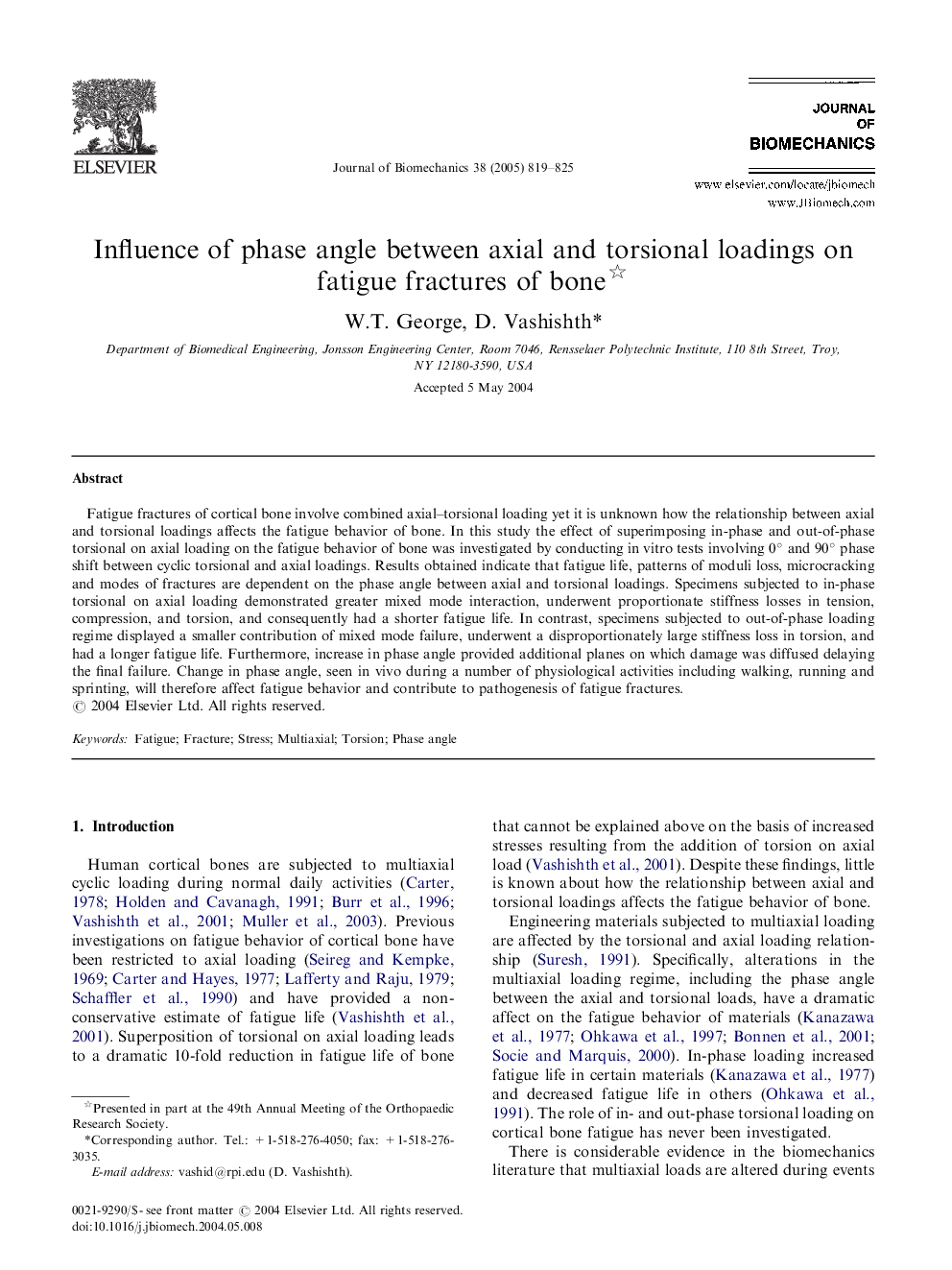| Article ID | Journal | Published Year | Pages | File Type |
|---|---|---|---|---|
| 10434446 | Journal of Biomechanics | 2005 | 7 Pages |
Abstract
Fatigue fractures of cortical bone involve combined axial-torsional loading yet it is unknown how the relationship between axial and torsional loadings affects the fatigue behavior of bone. In this study the effect of superimposing in-phase and out-of-phase torsional on axial loading on the fatigue behavior of bone was investigated by conducting in vitro tests involving 0° and 90° phase shift between cyclic torsional and axial loadings. Results obtained indicate that fatigue life, patterns of moduli loss, microcracking and modes of fractures are dependent on the phase angle between axial and torsional loadings. Specimens subjected to in-phase torsional on axial loading demonstrated greater mixed mode interaction, underwent proportionate stiffness losses in tension, compression, and torsion, and consequently had a shorter fatigue life. In contrast, specimens subjected to out-of-phase loading regime displayed a smaller contribution of mixed mode failure, underwent a disproportionately large stiffness loss in torsion, and had a longer fatigue life. Furthermore, increase in phase angle provided additional planes on which damage was diffused delaying the final failure. Change in phase angle, seen in vivo during a number of physiological activities including walking, running and sprinting, will therefore affect fatigue behavior and contribute to pathogenesis of fatigue fractures.
Related Topics
Physical Sciences and Engineering
Engineering
Biomedical Engineering
Authors
W.T. George, D. Vashishth,
